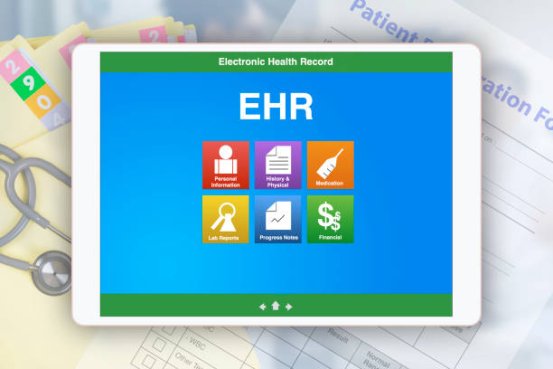Health
Transforming Healthcare Through EHR Solutions
Electronic Health Record (EHR) solutions digitize patient information, improve workflow efficiency, and enhance the quality of care in medical practices of all sizes. This article examines systems designed for small practices, pediatric care, and universal healthcare settings, highlighting their unique features and benefits.
Electronic Health Record (EHR) solutions digitize patient information, improve workflow efficiency, and enhance the quality of care in medical practices of all sizes. This article examines systems designed for small practices, pediatric care, and universal healthcare settings, highlighting their unique features and benefits.

Understanding EHR Solutions for Small Practices
Small medical practices face distinctive challenges in managing patient information due to limited budgets and less sophisticated IT infrastructure compared to larger hospitals. Selecting the most appropriate EHR solution is critical for ensuring smooth operations. EHR systems for small practices prioritize affordability, user-friendliness, and adaptability, enabling clinics to expand their services without the need for costly system overhauls. By adopting these systems, even smaller healthcare providers can maintain high-quality, personalized patient care while keeping pace with technological advancements in the healthcare industry.
Benefits of EHR Solutions for Small Practices
1. Cost-Effective Solutions
EHR systems often offer pricing structures tailored to smaller budgets, providing essential functionality without financial strain—a critical factor for practices with limited resources.
2. User-Friendly Interfaces
Intuitive designs and straightforward navigation allow staff to adopt the system quickly, reducing the time needed for training and allowing providers to focus more on patient care than technology.
3. Scalability
Systems can expand alongside the practice, accommodating larger patient populations and evolving operational requirements without necessitating a complete technology replacement.
4. Integration Capabilities
Seamless integration with billing, laboratory, and other clinical software ensures cohesive workflows, reducing disruptions and supporting smooth transitions to electronic records.
Together, these advantages help small practices enhance operational efficiency, improve patient satisfaction, and maintain compliance with healthcare regulations, all of which are vital for sustainable growth and success.
Eclipse EHR Solutions: A Comprehensive Overview
Eclipse EHR Solutions is recognized for its extensive capabilities and adaptability across multiple medical specialties. Its customizable design allows practices to align workflows efficiently while leveraging advanced tools for optimal patient management.
Key Features of Eclipse EHR Solutions
1. Customizable Templates
Adapt documentation templates to specific workflows, streamlining administrative processes and improving staff efficiency.
2. Advanced Reporting Tools
Analyze patient data to detect trends, enhance clinical decision-making, and optimize operational performance.
3. Patient Portal
Secure access to health records empowers patients to engage actively in their care, promoting better compliance and follow-ups.
4. Interoperability
Facilitate smooth exchange of data across different healthcare systems, supporting coordinated care while maintaining data integrity.
These capabilities make Eclipse an attractive option for providers aiming to improve efficiency without compromising patient care quality.
PCC Pediatric EHR Solutions
Pediatric care presents unique challenges that require specialized tools. PCC Pediatric EHR Solutions offer functionalities designed specifically for pediatric practices, enabling healthcare providers to deliver better care while streamlining administrative tasks.
Advantages of PCC Pediatric EHR Solutions
1. Growth Charts and Developmental Milestones
Monitor and assess pediatric growth to detect potential health concerns at an early stage.
2. Immunization Tracking
Ensure accurate and up-to-date vaccination records, complying with public health requirements.
3. Parent Communication Tools
Support timely and clear communication with parents about their child’s health and care plans.
4. Specialized Templates
Enable efficient documentation of pediatric visits without omitting critical health details.
PCC systems help reduce clerical burdens, allowing pediatricians to focus on providing patient-centered, high-quality care.
The Role of Universal EHR Solutions
Universal EHR solutions provide flexible systems suitable for multiple specialties and various practice sizes, allowing diverse workflows to be managed within a single platform.
Core Features of Universal EHR Solutions
1. Wide Range of Templates
Cater to multiple medical disciplines, promoting consistency and efficiency across departments.
2. Comprehensive Data Management
Centralize patient information for easy access, reducing fragmentation and supporting informed clinical decision-making.
3. Enhanced Security Measures
Protect sensitive data using advanced security protocols, ensuring compliance with regulations and safeguarding patient confidentiality.
4. Telehealth Integration
Facilitate virtual consultations, expanding access to care for patients while providing flexibility for healthcare providers.
Universal EHR systems streamline operations while addressing the diverse needs of healthcare practices effectively.
EHR Adoption Trends in Healthcare
EHR adoption has grown significantly over the past decade, driven by advancements in technology, regulatory mandates, and incentive programs. Adoption among office-based physicians increased from 42% in 2008 to 86% in 2017 (ONC), reflecting a clear trend toward digitization in healthcare. Programs such as Meaningful Use have further encouraged the transition from paper-based records to electronic systems, improving efficiency, patient engagement, and health outcomes.
Challenges in Implementing EHR Systems
1. Cost Concerns
Initial investment and ongoing maintenance costs can be substantial, particularly for smaller practices with limited budgets.
2. Training Requirements
Staff may need extensive training to use new systems effectively, temporarily diverting attention from patient care.
3. Data Migration Issues
Moving existing records to a new system is complex and requires careful planning to prevent data loss or corruption.
4. Resistance to Change
Some staff may resist adopting new technologies, making leadership and change management strategies essential.
Successful EHR implementation requires careful planning, transparent communication, and robust vendor support to ensure minimal disruption and a smooth transition.
Q&A Section
What is an EHR? A digital platform containing comprehensive patient data—including medical history, diagnoses, medications, test results, and treatment plans—enabling coordinated care across healthcare settings.
How do small practices benefit from EHRs? EHRs improve workflow efficiency, reduce errors, streamline administrative tasks, ensure regulatory compliance, and optimize resource allocation.
Are there pediatric-specific EHRs? Yes, PCC Pediatric EHR Solutions provide child-focused features, including growth tracking, immunization management, and specialized documentation templates.
What factors should providers consider when choosing an EHR? Consider cost, usability, scalability, integration, security, and vendor support for long-term success.
How does telehealth integration work in Universal EHRs? Integrated platforms allow secure remote consultations, enhancing convenience and access for both patients and providers.
References
https://www.capminds.com/blog/athenahealth-vs-epic-for-small-practices-what-you-need-to-know/
https://www.clinii.com/integrated-ehrs
How do you like this article?




